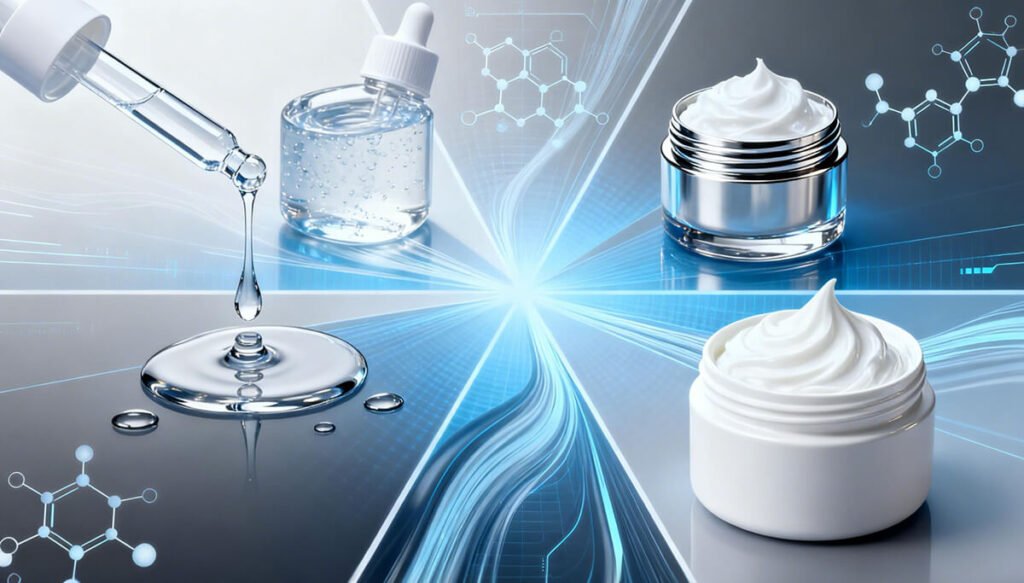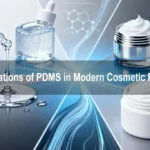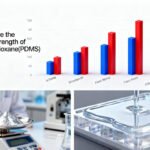How to Improve the Mechanical Strength of Polydimethylsiloxane
- Blog
- November 21, 2025
- 11:01 am


This article provides an in-depth analysis of the key applications of Polydimethylsiloxane (PDMS) in modern cosmetic formulations, explaining how its unique silicone chemistry enhances skin feel, spreadability, moisture retention, emulsion stability, and long-lasting performance. By exploring its roles in skincare, makeup, haircare, and sun-care products, the article offers valuable insights for cosmetic manufacturers seeking high-purity and stable silicone ingredients. Long-tail keywords such as cosmetic-grade PDMS, silicone emollients for skincare, and PDMS for hair conditioning systems are integrated to improve search visibility. As a trusted silicone solutions provider, Silico® offers reliable PDMS materials designed for advanced cosmetic and personal-care formulations.
Table of Contents
- 1. Introduction: Why PDMS Matters in Modern Cosmetics
- 2. Key Properties of Polydimethylsiloxane
- 3. Major Cosmetic Applications of PDMS
- 4. Common PDMS Types Used in Cosmetics
- 5. Formulation Guidance & Processing Notes
- 6. Safety, Regulatory, and Industry Standards
- 7. Strategy 5 — Copolymerization & hybrid chemical modification
- 8. Conclusion: Maximizing PDMS Benefits in Cosmetic Formulation
1. Introduction: Why PDMS Matters in Modern Cosmetics
Polydimethylsiloxane (PDMS), widely known as dimethicone, is one of the most essential silicone-based cosmetic ingredients used to optimize skin-feel, texture, spreadability, and long-term wear. Due to its low surface tension, chemical inertness, thermal stability, and adjustable viscosity, PDMS has become a key functional material in global cosmetic formulation.
In high-performance skincare, haircare, and makeup, PDMS ensures smooth application, non-greasy sensory profiles, and improved protection against transepidermal water loss (TEWL). These benefits make PDMS a cornerstone ingredient in modern cosmetic chemistry and silicone-based personal care formulations.
2. Key Properties of Polydimethylsiloxane
- Excellent spreadability and silky texture
- Low surface energy, enabling smooth application
- Water resistance and film-forming ability
- High thermal and chemical stability
- Adjustable viscosity across a wide range
- Compatibility with oils, esters, and silicone elastomers
These properties make PDMS ideal for cosmetic sensory enhancement, long-lasting formulations, and moisture barrier applications.
3. Major Cosmetic Applications of PDMS
3.1 Skincare: Creams, Lotions, and Barrier Protection
- Slip and spreadability
- Moisture retention
- Long-lasting smoothness
Non-greasy, premium sensory feel
3.2 Haircare: Conditioning, Anti-Frizz, and Shine
- Smooths damaged cuticles
- Reduces friction and improves combability
- Adds shine and softness
- Enhances heat protection
- Helps control frizz and static
Amodimethicone and other modified PDMS materials provide targeted deposition for damaged hair, making them essential in professional haircare formulations.
3.3 Color Cosmetics: Foundations, Concealers, and Long-Wear Makeup
- Enhancing slip and blendability
- Providing a soft-focus finish
- Increasing transfer resistance
- Supporting long-wear performance
- Improving pigment dispersion
Elastomeric PDMS gels are widely used in matte foundations, oil-control primers, and long-lasting concealers.
3.4 Cleansing & Personal-Care Products
- More stable surfactant systems
- Smoother rinse-off
Reduced irritation in cleansing formulations
3.5 Sensory Optimization and Rheology Control
- Product flow behavior
- Cream thickness and luxurious texture
- Velvet-like finishing effect
- Spreadability across different skin types
Silicone elastomers (crosslinked PDMS) are key ingredients in premium skincare and makeup bases, improving sensorial richness and oil control.


4. Common PDMS Types Used in Cosmetics
- Linear PDMS (dimethicone): sensory improvement and moisture barrier
- Volatile silicones (cyclomethicone/D4/D5/D6): fast-evaporating, lightweight feel
- Amino/alkyl/PEG-modified PDMS: targeted deposition on skin or hair
- Crosslinked PDMS elastomers: thickening, sensory enhancement, matte finish
These variations allow fine-tuning of skin feel, spreadability, volatility, film strength, and performance longevity.
5. Formulation Guidance & Processing Notes
- Add PDMS to the oil phase for consistent emulsification.
- Avoid excessive high-shear mixing to prevent air entrapment.
- For long-wear makeup, combine PDMS with elastomers for better structure.
- For conditioners, select cationic-modified PDMS for better adsorption.
- For lightweight skincare, blend low-viscosity PDMS with esters or volatile silicones.
Silico® offers multiple viscosity grades and modified PDMS options designed for both skincare and haircare formulations, ensuring optimal texture and stability.
6. Safety, Regulatory, and Industry Standards
PDMS materials such as dimethicone have been extensively reviewed by global authorities including:
- CIR (Cosmetic Ingredient Review)
- EU SCCS (Scientific Committee on Consumer Safety)
- FDA regulations for specific PDMS uses
Findings consistently show PDMS is safe for cosmetic use under standard concentrations, with special attention required only for aerosolized or nano-sized forms.
7. Environmental Considerations & Sustainability
While PDMS is chemically stable and non-reactive, environmental focus has increased around:
The industry trend is moving toward low-VOC silicones, biodegradable silicone hybrids, and improved wastewater handling.
Brands should remain updated on evolving global restrictions and eco-labeling requirements to ensure sustainability and compliance.
8. Conclusion: Maximizing PDMS Benefits in Cosmetic Formulation
Polydimethylsiloxane remains one of the most versatile and high-performance ingredients in the beauty industry, delivering unmatched sensory improvements, formulation stability, and long-wear benefits. By selecting the appropriate PDMS grade and applying proper formulation techniques, cosmetic brands can achieve superior quality and performance.
Silico® continues to develop advanced PDMS technologies—supporting formulators who aim to create high-end, stable, and sensorially optimized skincare, haircare, and makeup products.
Popular Recommendations
Get a Catalog & Best Price
- Quick and helpful reply within 24 hours;
- Tailored solutions provided for your project;
- One-stop purchasing service.
TRENDING
Silico® ORGANOSILICON
- Address: Daiyue Industrial Area, Taian, Shandong, China


